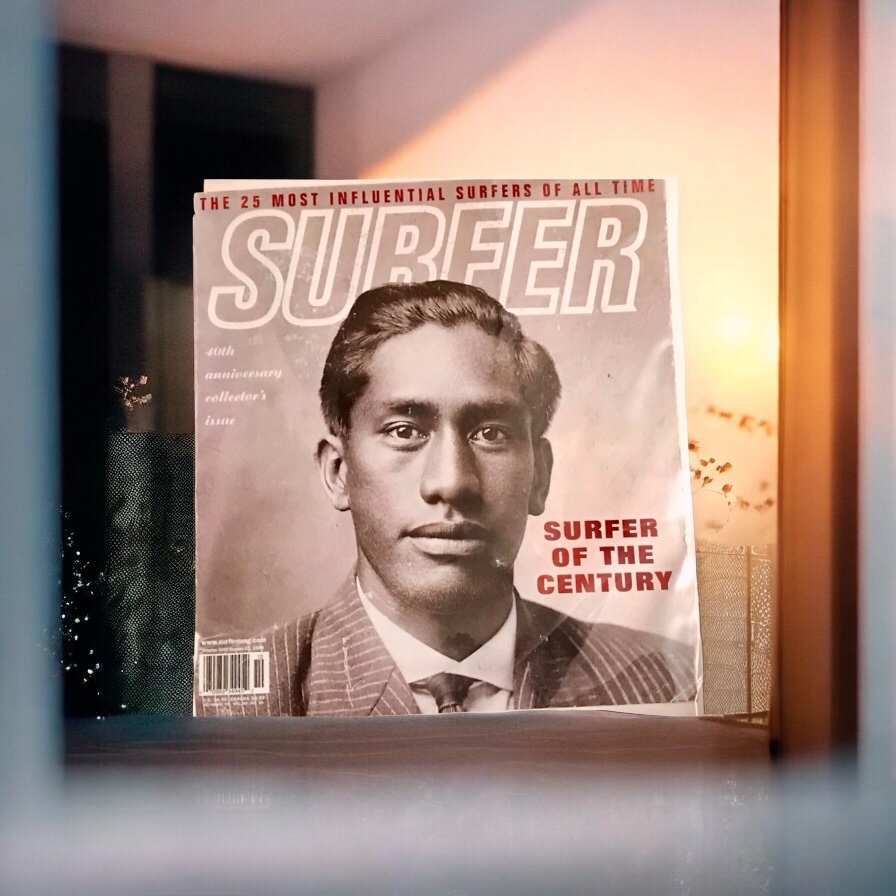In 1999, Surfer Magazine honored Duke Kahanamoku by featuring him on the cover and declaring him the “Surfer of the Century,” a commendation I find truly remarkable.
I was unaware of this magazine’s existence until I stumbled upon an article in another surfing publication. My subsequent online search revealed only a few copies available, priced at $49 and above. However, I took my time and enjoyed the hunt, ultimately finding a copy for just $20.00.
Upon receiving the magazine, I eagerly began preserving the pages featuring Duke’s images, as the cover showed signs of fading and deterioration. Now, the magazine is secure, and Duke’s photograph prominently rests atop my wire rack shelves next to my desk. I find myself frequently drawn to his image, captivated by the intriguing expression on his face.
The angle of the photograph is somewhat deceptive; while it was intended for publicity, it appears as though he is gazing directly at me, inviting a conversation (which brings a smile). Based on my research, this picture was taken when he was in his twenties, a time when he was blossoming into an attractive man.
I have many questions about him, but regrettably, I cannot seek answers, as I was not born until after his passing. Still, I wish to express my curiosity, recognizing that I am not adept at keeping thoughts to myself, unlike Duke, who embodied the mindset of “Don’t talk—keep it to your heart,” rooted in the Hawaiian phrase “Mahape a ale wala’au.”
I am curious about the location and year the photograph was taken. I wonder whether he was lost in thought or simply staring at a blank space while preparing for this image.
Reflecting on the significance of photographs, I recognize that they convey a range of emotions, and Duke’s image certainly encapsulates that essence.
He was well-loved and widely recognized during his lifetime, yet despite the many photographs taken of him, he never graced the cover of a magazine or newspaper during his era. Instead, he was often relegated to smaller features or inserts within publications.
I discovered that the writers responsible for the cover story were uncertain if Duke’s image would be accepted, given its age and the presence of numerous influential surfers from various eras. Ultimately, the Chief Editor decided to feature Duke on the cover, stating, “If they don’t know this guy, send them to me.”
I can’t help but wish he had been featured on a magazine cover during his lifetime, so he could have witnessed the recognition he so richly deserved.
Writing this blog has allowed me to articulate my thoughts and opinions.
Duke Kahanamoku serves as a profound inspiration to me, and even though my reflections may not always carry the same weight as previous entries, I always find something meaningful to say about him.
